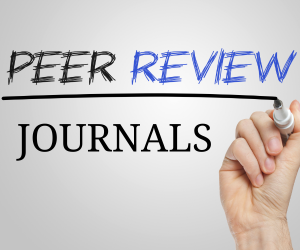AUTONOMIC DYSFUNCTION IN COVID-19 PATIENTS
Keywords:
Corona virus, Autonomic Dysfunction, POTS, NeuropathyAbstract
Post-COVID-19 syndrome is a poorly understood aspect of the covid pandemic, with clinical features that overlap with symptoms of autonomic/small fiber dysfunction. An analysis of autonomic dysfunction following COVID-19 was lacking. Various studies have reported and encountered patients with debilitating symptoms following viral infections who were subsequently found to have orthostatic intolerance syndromes. Orthostatic intolerance syndromes include orthostatic hypotension (OH), vasovagal syncope (VVS) and postural orthostatic tachycardia syndrome (POTS). The pathophysiology hinges on an abnormal autonomic response to orthostasis (standing up). It was also observed that a strong association between post-COVID-19 fatigue and anxiety existed. This is of particular note. Here, we audit and conducted a review of the studies and patients with confirmed history of COVID-19 infection that presented or were referred for autonomic testing for symptoms concerning for para or postinfectious autonomic dysfunction.
References
Shouman K, Vanichkachorn G, Cheshire WP, Suarez MD, Shelly S, Lamotte GJ, Sandroni P, Benarroch EE, Berini SE, Cutsforth-Gregory JK, Coon EA, Mauermann ML, Low PA, Singer W. Autonomic dysfunction following COVID-19 infection: an early experience. Clin Auton Res. 2021 Jun;31(3):385-394.
Koralnik IJ, Tyler KL. COVID-19: a global threat to the nervous system. Ann Neurol. 2020;88:1–11.
doi: 10.1002/ana.25807.
Harapan BN, Yoo HJ. Neurological symptoms, manifestations, and complications associated with severe acute respiratory syndrome coronavirus 2 (SARS-CoV-2) and coronavirus disease 19 (COVID-19) J Neurol. 2021;23:1–13.
Collins FS (2021) NIH launches new initiative to study “Long COVID”. URL: https://www.nih.gov/about-nih/who-weare/nih-director/statements/nih-launches-new-initiative-study-long-covid.
Miglis MG, Prieto T, Shaik R, Muppidi S, Sinn D-I, Jaradeh S. A case report of postural tachycardia syndrome after COVID-19. Clin Auton Res. 2020;30:449–451.
Kanjwal K, Jamal S, Kichloo A, Grubb BP. New-onset postural orthostatic tachycardia syndrome following coronavirus disease 2019 infection. J Innov Card Rhythm Manag. 2020;11:4302–4304.
Umapathi T, Poh MQW, Fan BE, Li KFC, George J, Tan JYL. Acute hyperhidrosis and postural tachycardia in a COVID-19 patient. Clin Auton Res. 2020;30:571–573.
Novak P. Post COVID-19 syndrome associated with orthostatic cerebral hypoperfusion syndrome, small fiber neuropathy and benefit of immunotherapy: a case report. Neurological Sci. 2020
Jardine DL, Wieling W, Brignole M, et al. The pathophysiology of the vasovagal response. Heart Rhythm 2018;15:921– 9.
10.Fenton AM, Hammill SC, Rea RF, Low PA, Shen WK. Vasovagal syncope. Ann Intern Med 2000;133:714–25.
11.Fedorowski A. Postural orthostatic tachycardia syndrome: clinical presentation, aetiology and management. J Intern Med 2019;285:352–66.
12.Lahrmann H, Cortelli P, Hilz M, et al. EFNS guidelines on the diagnosis and management of orthostatic hypotension. Eur J Neurol 2006;13:930–6
13.Daniels J, Brigden A, Kacorova A. Anxiety and depression in chronic fatigue syndrome/myalgic encephalomyelitis (CFS/ME): examining the incidence of health anxiety in CFS/ME. Psychology and Psychotherapy: Theory, Research and Practice. 2017;90(3):502-9
14.Daniels J, Parker H, Salkovskis PM. Prevalence and treatment of Chronic Fatigue Syndrome/Myalgic
Encephalomyelitis and co-morbid severe health anxiety. International Journal of Clinical and Health Psychology. 2020;20(1):10-9
15.Owens AP, Low DA, Iodice V, Critchley HD, Mathias CJ. The genesis and presentation of anxiety in disorders of autonomic overexcitation. Autonomic Neuroscience. 2017;203:81-7
16.Vassend O, Røysamb E, Nielsen CS, Czajkowski NO. Fatigue symptoms in relation to neuroticism, anxiety-depression, and musculoskeletal pain. A longitudinal twin study. PloS one. 2018;13(6):e198594
17.Close S, Marshall-Gradisnik S, Byrnes J, Smith P, Nghiem S, Staines D. The Economic Impacts of Myalgic
Encephalomyelitis/Chronic Fatigue Syndrome in an Australian Cohort. Frontiers in Public Health. 2020;8:420.
Downloads
Published
Issue
Section
License

This work is licensed under a Creative Commons Attribution 4.0 International License.
Licensing
Ninety Nine Publication publishes articles under the Creative Commons Attribution 4.0 International License (CC BY 4.0). This licensing allows for any use of the work, provided the original author(s) and source are credited, thereby facilitating the free exchange and use of research for the advancement of knowledge.
Detailed Licensing Terms
Attribution (BY): Users must give appropriate credit, provide a link to the license, and indicate if changes were made. Users may do so in any reasonable manner, but not in any way that suggests the licensor endorses them or their use.
No Additional Restrictions: Users may not apply legal terms or technological measures that legally restrict others from doing anything the license permits.





